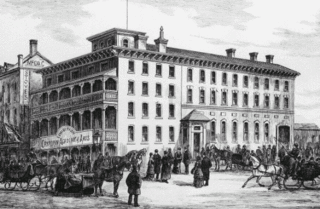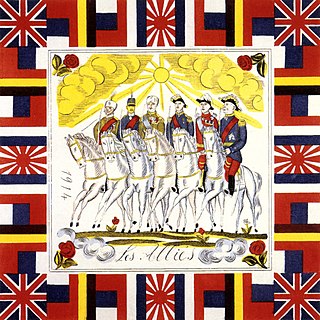
Printmaking is the process of creating artworks by printing, normally on paper, but also on fabric, wood, metal, and other surfaces. "Traditional printmaking" normally covers only the process of creating prints using a hand processed technique, rather than a photographic reproduction of a visual artwork which would be printed using an electronic machine ; however, there is some cross-over between traditional and digital printmaking, including risograph.

In European academic traditions, fine art is made primarily for aesthetics or creative expression, distinguishing it from decorative art or applied art, which also has to serve some practical function, such as pottery or most metalwork. In the aesthetic theories developed in the Italian Renaissance, the highest art was that which allowed the full expression and display of the artist's imagination, unrestricted by any of the practical considerations involved in, say, making and decorating a teapot. It was also considered important that making the artwork did not involve dividing the work between different individuals with specialized skills, as might be necessary with a piece of furniture, for example. Even within the fine arts, there was a hierarchy of genres based on the amount of creative imagination required, with history painting placed higher than still life.

An illustration is a decoration, interpretation, or visual explanation of a text, concept, or process, designed for integration in print and digitally published media, such as posters, flyers, magazines, books, teaching materials, animations, video games and films. An illustration is typically created by an illustrator. Digital illustrations are often used to make websites and apps more user-friendly, such as the use of emojis to accompany digital type. Illustration also means providing an example; either in writing or in picture form.
Graphics are visual images or designs on some surface, such as a wall, canvas, screen, paper, or stone, to inform, illustrate, or entertain. In contemporary usage, it includes a pictorial representation of data, as in design and manufacture, in typesetting and the graphic arts, and in educational and recreational software. Images that are generated by a computer are called computer graphics.
A Bachelor of Fine Arts (BFA) is a standard undergraduate degree for students for pursuing a professional education in the visual, fine, or performing arts. It is also called Bachelor of Visual Arts (BVA) in some cases.

A category of fine art, graphic art covers a broad range of visual artistic expression, typically two-dimensional, i.e. produced on a flat surface. The term usually refers to the arts that rely more on line, color or tone, especially drawing and the various forms of engraving; it is sometimes understood to refer specifically to printmaking processes, such as line engraving, aquatint, drypoint, etching, mezzotint, monotype, lithography, and screen printing. Graphic art mostly includes calligraphy, photography, painting, typography, computer graphics, and bindery. It also encompasses drawn plans and layouts for interior and architectural designs.

The Royal Canadian Academy of Arts (RCA) is a Canadian arts-related organization that was founded in 1880.

The Yale School of Art is the art school of Yale University. Founded in 1869 as the first professional fine arts school in the United States, it grants Masters of Fine Arts degrees to students completing a two-year course in graphic design, painting/printmaking, photography, or sculpture.

The Art and Design University is an art university located in Cluj-Napoca, Romania. It was founded on November 15, 1925, as the Fine Arts School of Cluj. It was formerly known as Academy of Visual Arts "Ioan Andreescu" until 30 June 2000.
Class N:Fine Arts is a classification used by the Library of Congress Classification system. This page outlines the subclasses of Class N.

The Government College of Art & Craft (GCAC) in Kolkata is one of the oldest Art colleges in India. It was founded on August 16, 1854 at Garanhata, Chitpur, "with the purpose of establishing an institution for teaching the youth of all classes, industrial art based on scientific methods." as the School of Industrial Art. The institute was later renamed as the Government School of Art and in 1951 it became the Government College of Art & Craft.

The visual arts are art forms such as painting, drawing, printmaking, sculpture, ceramics, photography, video, filmmaking, comics, design, crafts, and architecture. Many artistic disciplines, such as performing arts, conceptual art, and textile arts, also involve aspects of the visual arts as well as arts of other types. Also included within the visual arts are the applied arts, such as industrial design, graphic design, fashion design, interior design, and decorative art.
Marianna Schmidt was a Hungarian-Canadian artist who worked primarily as a printmaker and painter.
Clare Romano (1922–2017) was an internationally known American printmaker and painter with works in the Metropolitan Museum of Art, the Museum of Modern Art, the Smithsonian American Art Museum, the Cooper Hewitt, Smithsonian Design Museum and other major collections. As an advocate, innovator, and educator in the field of printmaking, Romano has co-authored in collaboration with her husband, John Ross, The Complete Printmaker (1972), The Complete Collagraph (1980), and several other printmaking manuals that have become standard texts for universities. They founded their High Tide Press for artists books in 1991.

Israeli printmaking refers to printmaking by Jewish artists in the Land of Israel and the State of Israel beginning in the second half of the 19th century. The genre includes a variety of techniques, including woodcutting, etching and lithography.
James Lesesne Wells was an African American graphic artist, print-maker, and painter associated with the Harlem Renaissance. He was an influential art professor at Howard University from 1929 to 1968 and is considered a pioneer in modern art education.

Twentieth-century art underwent a profound transformation: in a more materialist, more consumerist society, art was directed to the senses, not to the intellect. The avant-garde movements arose, which sought to integrate art into society through a greater interrelation between artist and spectator, since it is the latter who interprets the work, being able to discover meanings that the artist did not even know.












